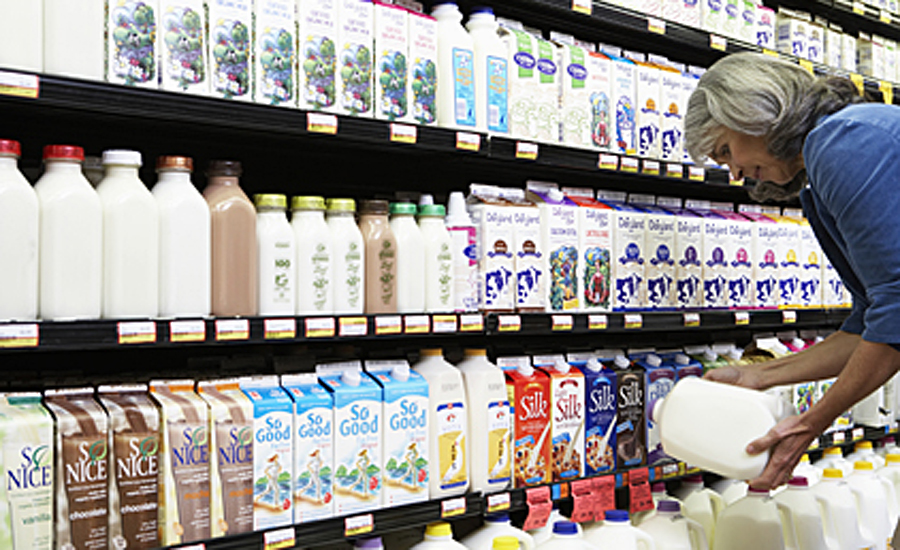The 2016 grocery e-commerce forecast— GenX users with families are the key target, with Millennials in second
This report indicates where U.S. grocery retailers should focus their attention in making the most of opportunities.

In December 2015, Unata, a Canada-based provider of grocery retail solutions, in partnership with Environics Research, an evidence-based consultant also based in Canada, surveyed more than 500 online U.S. shoppers about their current and intended shopping habits for online grocery in 2016.
This report highlights the most important results, indicating where U.S. grocery retailers should focus their attention in making the most of opportunities.
Key learnings of the report include:
(1) 2016 holds massive shopper interest and growth opportunity for curbside and delivery.
(2) If you’re not online, your customers are already, therefore you’re losing share of wallet.
(3) The segments most interested in e-commerce aren’t those you would expect.
(4) Many of your shoppers and prospects would switch for a great digital experience.
2016 e-grocery is a double-digit opportunity
Online grocery adoption is already at an impressive level, with 8% of respondents having made an online grocery purchase in 2015. Consumer interest shows the possibility of that figure doubling, with 17% of respondents indicating that they are “very likely” or “somewhat likely” to buy groceries online in 2016.
Perhaps even more impressive is the projected retention rates for e-grocery shoppers; nine out of 10 shoppers who bought groceries online in 2015 will likely do so in 2016, with 72% indicating “very likely.” These results clearly indicate the rapidly evolving customer desire to engage online, and the need for grocers to offer these services to retain shopper loyalty.
Not online yet? You’re losing share of wallet.
An overwhelmingly large amount of shoppers who purchased their groceries online in 2015 turned to alternative sources instead of their primary grocer due to lack of an online shopping experience; nearly 40% of those who purchased groceries online reported that their primary grocer did not offer online shopping. This highlights an unmet need, and that retailers who are not providing this service are losing share of wallet from their most loyal shoppers.
Even if the shoppers’ primary grocer does not currently offer online shopping, a significant portion responded that they are “very likely”or “somewhat likely”to purchase groceries online in 2016, indicating that they are open to taking their business elsewhere to gain this convenient experience.
The profile of an online grocery shopper
While adoption of online grocery shopping in 2015 was the same for men and women, men are expressing slightly greater interest for 2016.
GenX shoppers, for example, are two times more likely than average to say they were “very likely” to purchase groceries online in the next year (8% for 35-54, vs. 3% for 18-34, 2.5% for 55-plus), and Millennials were the most likely to indicate that they were “somewhat likely” (28% for 18-35 vs. 12% for 35-54, 7% for 55-plus).
Those with a household income of more than $100K are 50% more likely to have shopped online in the past relative to the average.
In the next year, families in the $50-$100K income bracket are almost as likely to purchase groceries online as the $100K-plus income bracket.
Shoppers will switch for online capabilities
Shoppers are almost equally willing to switch to a different grocer for an excellent e-commerce experience. In fact, 4% of shoppers reported being “very likely”to switch, and 12% reported being “somewhat likely”to do so.
Not surprisingly, 28% of those who have shopped online for groceries before reported being “very likely”to switch for a great online experience, and 36% reported being “somewhat likely,” indicating that once a user has been exposed to e-commerce, they attribute an immense value to the service. To contrast, only 8% of those who had not shopped online before reported being “very likely”to switch.
This presents a compelling opportunity to attract and retain customers, evidenced by the e-commerce retention rates shown earlier in the report.
Additionally, should your competitors gain first-mover advantage, many of your customers may be at risk.
Online shopping represents a key opportunity for U.S. grocers, as evidenced by the following:
1. Adoption and demand for grocery e-commerce is strong, growing and could hit double digits in 2016.
2. Demand and adoption is present, even if the service isn’t offered by their primary grocer.
3. GenX users with families are the key target, with Millennials in second.
4. A significant amount of shoppers will switch grocers for a great online experience.
In order to increase customer loyalty, minimize churn, expand share of wallet and attract new shoppers, grocers must act now and embrace online solutions that enable a world-class customer experience.
Looking for a reprint of this article?
From high-res PDFs to custom plaques, order your copy today!





